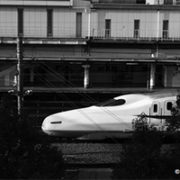Tag Archives | India
Governance and public sector management, Transport
 Economics, Finance sector development, Transport
Economics, Finance sector development, Transport
 Environment, Water
Environment, Water
 Environment, Water
Environment, Water
 Economics, Environment, Industry and trade
Economics, Environment, Industry and trade
 Finance sector development
Finance sector development
 Economics
Economics
 Economics
Economics
 Urban development
Urban development

Thinking beyond the suitability of high-speed railway in India

In India, the project to build the country’s first 500-kilometer high-speed railway (HSR) from Mumbai to Ahmedabad is underway. For comparison, all top 10 economies in the world except the United States have constructed several HSR lines in the past 30 years. The People’s Republic of China (PRC) alone has built nearly 28,000 kilometers of HSR in the past 20 years. Nevertheless, opinion makers in India are expressing contradicting views, questioning whether it is suitable for the country to develop expensive infrastructure such as HSR.
Spillover and straw effects of high-speed rail

On a typical ride on the Tokaido Shinkansen traveling from Shin-Osaka to Tokyo, it does not take a childlike imagination to notice the view from the bullet train of scattered cars, small houses, and baseball fields, gradually changing as the train approaches its destination to packed apartment buildings and tall office towers. This is an important phenomenon of high-speed rail (HSR) implementation, which can be described by the terms “spillover effect” and “straw effect.”
Composite Water Management Index: A pathway to solve the water crisis in India

The National Institution for Transforming India (NITI Aayog) and, more importantly, the citizens of India have acknowledged that the country is undergoing the “worst water crisis” in its history—and they are making commendable efforts to address it. They have proposed a comprehensive index to create awareness and to enable effective water management for the Indian states. In June 2018, NITI Aayog, the premier think tank for the Government of India, proposed the Composite Water Management Index, a tool to assess and improve the efficiency of water resource management.
“Commitment” as a success factor for fecal sludge management

Leh, a high-altitude cold desert in India, is a popular tourist destination hosting around 250,000 visitors annually. At present, the poorly designed septic tanks and soak pits installed by households, hotels, and guesthouses to contain fecal sludge are posing a serious threat to groundwater contamination. To cater to the demand for fecal sludge management (FSM), the Municipal Committee of Leh (MCL) partnered with a private company called Blue Water Company (BWC) and a technical nongovernment organization named BORDA in 2017 to provide an end-to-end FSM service, including pit emptying and operation of a sludge treatment plant.
International outsourcing, environmental costs, and welfare

In recent decades, amid the increasing trend of globalization, it has become prevalent in world trade that firms in some countries outsource intermediate and/or finished goods or services from other firms in foreign countries for the purpose of lowering production costs and increasing production efficiency.
Fintech is the game-changer for financial inclusion in Asia

Due to innovations in financial technology and changes in the enabling environment, the number of financially excluded adults across Asia and the Pacific has dropped to about 1 billion. Increased access to affordable financial services can be a lever for Asians to smoothen consumption, manage risk and improve their lives through better savings options, access to credit, and cheaper payments or remittances.
Structural reforms to sustain Asia’s growth

Economic growth in both developing and advanced economies has slowed since the global financial crisis. Developing Asia’s growth also moderated after the crisis, to a large extent driven by the slowdown in the People’s Republic of China (PRC). The region’s economy expanded on average 7.6% annually during 2001–2010, but growth slowed to an annual average of 6.5% during 2011–2015. ADB is projecting further deceleration to 5.7% in each 2016 and 2017.
PRC’s slowdown for Asia’s growth – key takeaways

After many decades of driving regional growth, the economy of the People’s Republic of China (PRC) is now slowing down, and this is likely going to have a noticeable effect on the world economy and especially globally integrated economies in developing Asia.
Walkability—Building cities for people too

With the urban population swelling the world over, it makes sense that we start—or go back to—designing cities for people too. People are a city’s principal raison d'etre. Cities therefore should be designed or redesigned to address one aspect that is at a more personal level for residents to make it greener: walkability.


Search
Subscribe / Connect to Asia Pathways
Subjects
- Agriculture and natural resources
- Blog
- Capacity development
- Climate change
- Economics
- Education
- Energy
- Environment
- Finance sector development
- Gender
- Governance and public sector management
- Health
- Industry and trade
- Information and Communications Technology
- Infrastructure
- Miscellaneous
- Population
- Poverty
- Private sector development
- Regional cooperation and integration
- Sanitation
- Social development and protection
- Transport
- Uncategorized
- Urban development
- Video Blog
- Water
Recent Posts
- Unraveling the Health Risks of Climate Change
- Linking Farmers to Markets Through Agricultural Cooperatives and E-Commerce in Asia
- How Can Governments Support Electricity Distribution to Achieve Net Zero in Asia?
- Promoting Corporate Climate Action Through Greenhouse Gas Accounting
- Evaluating G7 Commitments on Climate Change, Health, Well-Being, and Agriculture




Recent Comments